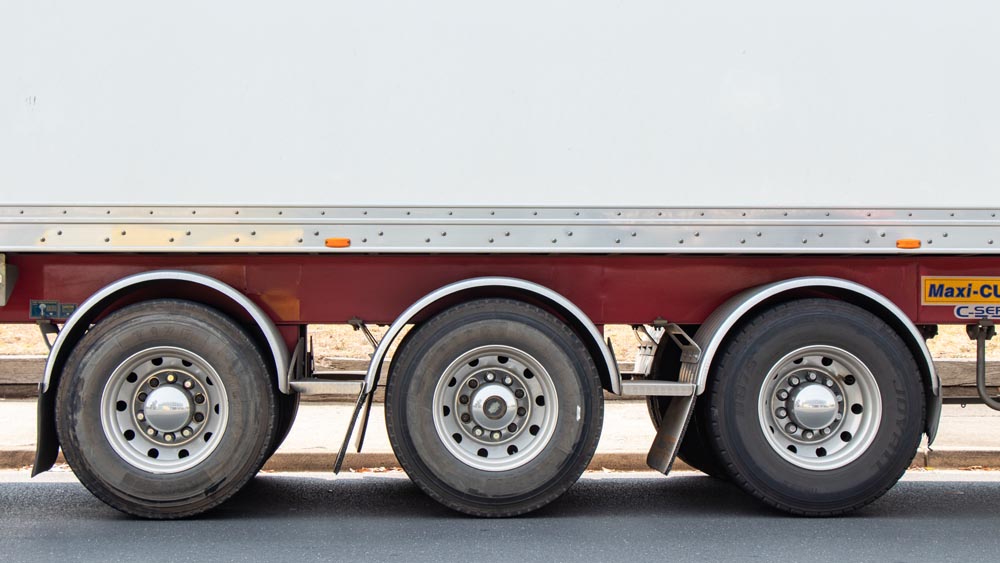The use of rubber tires for transportation dates back to the 1800s
Early pneumatic tube tires were popular for use in bicycles before they became staples on automobiles, and rubber is still used heavily for the same purpose.
The idea of retreading tires with rubber isn’t quite as traditional, but it is as prevalent if not more so (depending on industry) than new rubber tire creation.
Both rubber tires and the process of retreading rubber tires changed the way the rubber industry operated as suppliers, manufacturers, and automakers all relied on quality rubber to advance the industry.
Today, as a result, rubber manufacturers like AirBoss supply a fair amount of high-quality rubber for modern automobile tires and heavy vehicle retreads.


The History of Rubber Tires for Transportation
Believe it or not, rubber tires have been used for transportation for more than 130 years. That’s not long in the grand scheme of history, but for modern transportation (and how quickly transportation technology advances), it feels like forever.
Rubber is the material of choice for tires around the world, and the gradual changes to design and function over time have had lasting impacts.
The first rubber tires were simply rounds of solid rubber. Even these crude rubber tires improved durability, shock absorption, and dampening, which are all qualities rubber scientists still work to refine today.
“Modern” rubber tires—those more complex than solid rubber rounds—went through a series of milestone advancements including the following:
- 1888 – John Dunlap invented the pneumatic (air-filled) rubber tire for bicycles.
- 1895 – André Michelin was the first to attempt to use pneumatic tires (unsuccessfully) on automobiles.
- 1903 – The first tubeless tire was patented by P.W. Litchfield of the Goodyear Tire Company. This patented design wasn’t implemented until 1954.
- 1908 – Frank Seiberling invented grooved tires to improve traction.
- 1911 – Phillip Strauss and the Hardman Tire & Rubber Company developed the first automobile rubber tire made of an outer layer (which utilized Charles Goodyear’s vulcanization process) and an inner air-filled tube layer.
- 1912 – Marion Oliver developed a method for tire retreading.
- 1934 – Michelin improved the first run-flat tire designed to retain shape and performance in the event of a puncture.
- 1937 – The first synthetic rubber tires were created by the B.F. Goodrich Company.
- 1946 – Michelin developed the first radial tire, which outperformed its bias-ply predecessors
- 1954 – Packard became the first automotive manufacturer to offer tubeless rubber tires.
- 1980s – Run-flat tire technology was improved and made available to consumers.
These milestones paved the way for how automakers and manufacturers improve, implement, and mass-produce rubber tires today. In fact, The United States tire manufacturing sector’s gross output alone was nearly $21 billion in 2019, and the global tire market is projected to reach 2.6 billion units by the year 2027.
Contact Our Global Experts
Learn more about how we can make a material difference in your business, contact our world class staff for more detailed information.
What is Tire Retreading?
Retreading is the process – almost exclusively used by the transportation, trucking, and construction industries – that re-applies a rubber tread to a damaged or worn-down tire.
As mentioned above, this process was first developed by Marion Oliver in 1912. Oliver’s process to retread a tire buffed a rubber tire down to its fabric lining and then attached a pre-cured tread. Oliver shared his process with other retreaders at the time, and improvements were made as more and more vehicles hit the road over the next 100 years.
Retreading is less expensive than producing a brand-new tire, and the process extends the life of the original tire. What’s more, retread tires—both in the past and today—allow operators to wear their tires down to almost nothing rather than replace them after a puncture or other damage.
As tire technology advanced, so, too, did retreading processes and improvements. Things like synthetic rubber innovation, improved buffing rasps, and electrically-heated molds increased retread performance and production efficiency.
Rubber tire retreading has become such an essential aspect of some industries that AirBoss material scientists have developed new rubber compounds—like our proprietary DuraBoss—designed to increase the durability of retread tires to 100% of the original tire lifespan.
The Future of Rubber Tires and Retreading Looks Bright
The global retread tire market was valued at just over $9 billion in 2021 and is estimated to reach $12.5 billion by 2028. Similarly, since the tire market is expected to reach almost 3 billion units globally by 2027, it’s safe to say rubber tires and tire retreading will continue to make up a significant portion of the rubber production, consumption, and manufacturing industries.
This means companies like AirBoss—which have dedicated decades to rubber compound innovation—are uniquely positioned to support these industries as they grow.






